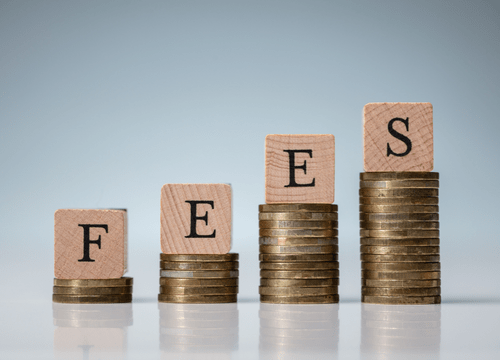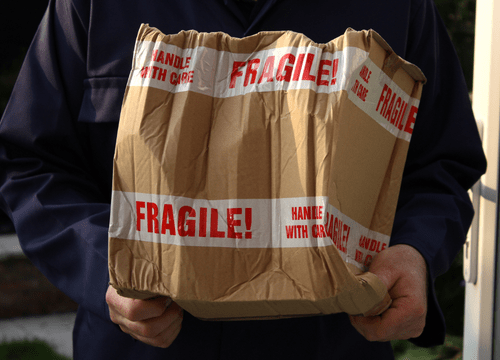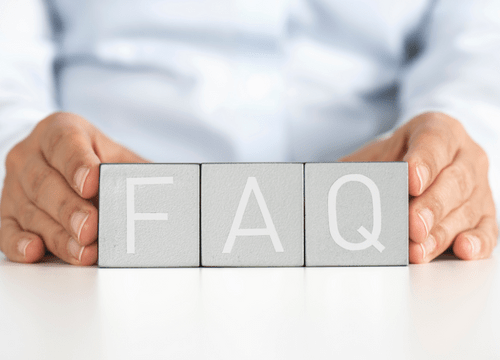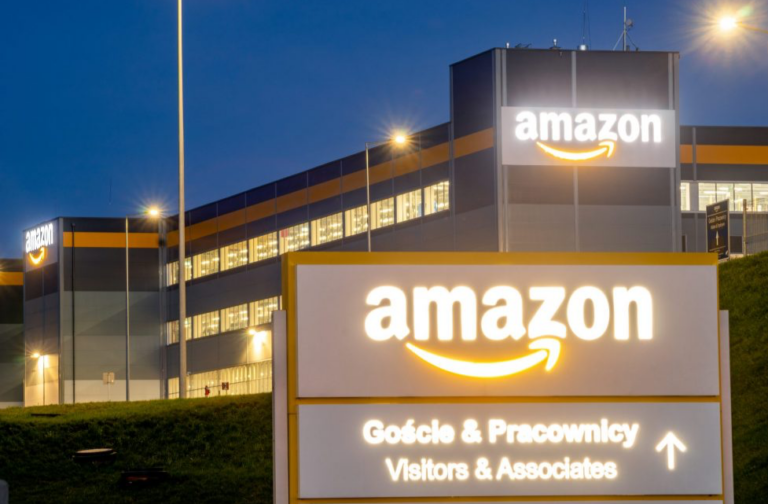FBA Fees Explained: A comprehensive guide to Amazon fulfillment charges and costs
Amazon FBA Fees Explained
The fees can be confusing if you’re new to Amazon’s Fulfillment by Amazon (FBA) program. Here’s a quick guide to help you understand the different fees involved in selling on Amazon.
When you sell on Amazon using the Fulfillment by Amazon (FBA) program, your items are stored at an Amazon fulfillment center, and they handle shipping for you. Two main fees are associated with using FBA: Amazon referral fees and fulfillment fees.
What does FBA stand for?
Fulfillment by Amazon is a business model that allows ecommerce sellers how to sell on amazon without inventory through Amazon’s fulfillment centers instead of directly through the seller’s website. This allows Amazon to handle the shipping, customer service, and returns for the products sold through its platform.

What are FBA fees?
When using Amazon Fulfillment, sellers pay fees for storing and shipping their products. Typically, these fees range between 2.5-5.5 USD per item and may vary depending on the seller’s location. As an Amazon Fulfillment user, it is important to understand the various fees associated with this process to ensure profitability. A comprehensive guide to FBA fees will provide a thorough understanding of the applicable charges, tiers, and costs for standard and large products.
What are the basic amazon FBA costs?
Amazon FBA costs vary based on factors such as product weight, size, and type. Generally, the most common Amazon FBA fees are 6%-20% of the product’s total sales price. These fees include inventory storage costs such as picking, packing, and shipping. Also, sellers need to consider other associated costs like taxes or shipping charges when calculating their profits. To accurately calculate the total sales price vs cost of Amazon FBA, it is important to consider all relevant fees associated with selling on Amazon and then subtract those from total sales to determine profits generated from using FBA services.
What factors affect the cost of Amazon FBA fees?
A few factors can affect the cost of Amazon FBA fees. The type of product you are selling, the size and weight of the product, and the number of units you are selling all play a role in determining your fees.
Other factors, such as shipping costs and Amazon storage fees, can also impact the bottom line. In this post, we’ll look at each of these factors so you can better understand how they affect your business.
Amazon fulfillment fee
The Amazon fulfillment fee is an important factor to consider when utilizing Amazon FBA because it helps to ensure the affordability of shipping heavier items. The fee is based on the item’s weight, ranging from 4 oz for items under 14 oz to 21 lb for items over 3+ lb, with additional surcharges added for heavier items. By charging customers a reasonable fee per shipment, Amazon plans ensure that more customers can access its services without being impacted by prohibitively high shipping costs.
Amazon FBA storage fees
Amazon FBA storage fees can significantly impact the overall cost of an Amazon FBA business. Depending on the length of time that products are stored, Amazon charges different storage fees based on the amount of space occupied by those products. Amazon FBA sellers need to understand how these storage fees affect their costs to make informed decisions about their inventory and pricing strategy.
Amazon FBA returns processing fee
The return processing fees associated with Amazon FBA can impact the overall cost of FBA fees. The size and weight of the product being returned affect the fee, ranging from $2.12 to $6.81, depending on the product’s weight. Sellers should factor in this fee when determining their total cost for utilizing Amazon FBA services.
Amazon FBA disposal order fee
The Amazon FBA disposal order fee affects the cost of Amazon FBA fees based on the weight of the disposed of items. If a seller has a larger quantity of products that need to be removed from fulfillment centers, they may incur higher removal and disposal fees than fewer products.
Amazon FBA removal order fee
An Amazon FBA removal order fee is a type of Amazon seller fee that must be paid when requesting their products to be removed from the Amazon Fulfillment inventory. Removal and disposal fees vary depending on the product weight and tier, which can be expensive for heavier items. The removal fee and associated costs can be viewed in one’s Amazon seller central account or My Real Profit Expenses tab. A 14-day free trial of this service is available through a provided link.
Amazon FBA unplanned service fee
It is important to know about the unplanned service fee because if products are not correctly labeled, Amazon will charge a fee to fix the issue. This fee varies depending on the size and error of the unit, so understanding what these fees are can help sellers avoid unnecessary costs. Furthermore, manual processing fees may be charged when Amazon applies FNSKU labels at their fulfillment centers, which can be avoided by becoming an Amazon FBA member or creating a shipping plan ahead of time.
Amazon FBA long-term storage fee
The long term storage fee affects the cost of Amazon FBA by charging a higher rate for products stored for 365 days or longer. This fee is either subtracted from the account balance or added to a credit card if insufficient funds exist. To reduce the cost of Amazon FBA, it’s best to store items for a shorter duration and manage inventory to avoid a long-term storage fee. Additionally, selling products at a discount can help reduce costs related to high inventory and a referral fee.
Refund administration fee
The refund administration fee is a charge that Amazon Prime applies when a customer is refunded for an item. The fee is based on the percentage of the total sales price of an item in a particular category, which can be quite costly. To compensate for the extra cost, sellers must raise their prices or offer additional non-refundable services. This ultimately affects the overall cost associated with Amazon FBA fees.
Unplanned service fee
An unplanned service fee is a charge that Amazon may apply when a barcode associated with an item is missing or if there are issues regarding the product’s safety. To avoid these fees, suppliers must ensure that products are prepared in advance and labeled correctly when shipped to Amazon fulfillment centers, as manual processing fees will be imposed for incorrect labeling. These fees generally amount to either $15 or $0.30 per unit.
Extra shipping bulk
Shipping bulk can significantly impact Amazon FBA fees, as different sizes and weights of items incur different charges. Oversized items cost more than smaller items due to higher shipping costs, with medium and large oversize being charged $13.37 versus $9.39 for the first pound and then an additional $0.46 per pound compared to $0.40 respectively for small oversize items. In addition, large items will have a higher fulfillment fee than small or medium-sized products as well as a starting price of $86.71 with an extra charge of $0.83 per 90 pounds added for each additional weight increment over one pound if choosing the standard delivery option on or after April 28, 2022.

Advertising and Amazon PPC ads
Advertising and Amazon PPC ads are important factors that affect the cost of Amazon FBA fees because they can help generate sales on the platform. Advertising through PPC (pay-per-click) ads is one of the most effective ways to get sales when no one can find your product. Running sponsored ads helps justify their cost by providing a return on investment, which can be as high as 12x. This significantly cuts traditional marketing costs and allows sellers to grow their business with minimal expense. Moreover, running editorial recommendations costs an upfront fee but earns a commission on any resulting sales-providing extra financial support for businesses in need.
Overhead for running your business
When running an Amazon FBA business, there are a few overhead costs that must be taken into consideration. These costs include high-quality photographs of products, sales tax, product liability insurance, and a business structure such as an LLC or corporation. To calculate the total overhead cost for the past 12 months, one must add up those expenses and divide it by the number of units sold during that period. Many businesses choose to use Amazon FBA due to its many advantages, like dependable and swift delivery services and keeping up with competitors’ speed. Additionally, Amazon FBA can help consolidate processes so that owners can focus on other areas of their business while leaving packaging and shipping in the hands of Amazon customer service team members who work on your business schedule whenever needed.
Product dimensions
Product dimensions are a key factor in determining Amazon FBA fees. Changes in product dimensions can cause higher fees to be charged by Amazon. Therefore, it is important for sellers to regularly check their product dimensions to ensure that they are accurate and paying the correct fees for those products. If discrepancies are found, sellers should file a case with Amazon Seller Support immediately. Additionally, product dimensions can change anytime, so sellers must stay on top of this issue to avoid any potential overpayment of fees. Certain products, such as food, alcohol, and electronic items, may not be eligible for Amazon’s Small and Light FBA services; thus, further research must be done before enrolling in this program.
Inventory management
Inventory management can directly affect the cost of Amazon FBA fees. By managing inventory more efficiently, such as storing products outside peak seasons to reduce storage fees or submitting removal and disposal orders to avoid storage fees, sellers can save money on standard and large items. Additionally, the IPI score provides insight into how well inventory is being managed, while Inventory Age, Inventory Health, and Recommended Removal reports offer more detail. A higher IPI score means less inventory is required to meet demand, reducing manufacturing and fulfillment costs associated with FBA fees.

Returns and damaged goods
Returns and damaged goods can significantly impact the cost of Amazon FBA fees. When an item is returned or determined to be damaged, Amazon charges a fee for the return process, which is equal to the fulfillment fees per unit. Additionally, they may also charge a fee for repackaging returned items. These costs can add up quickly and should be considered when calculating total FBA fees.
How do you calculate the cost of Amazon FBA fees?
Calculating the cost of Amazon FBA fees can be tricky, but ensuring you’re making a profit on your sales is important.
We’ll walk you through how to calculate the cost of Amazon FBA fees so that you can make sure your business is running smoothly and profitably.
Step 1: Identify existing inventory issues
Identifying existing inventory issues can be a critical factor in calculating the cost of Amazon FBA fees. Without identifying these issues, storage fees and FBA removal costs may be unaccounted for. Furthermore, regular monitoring of inventory reports and automated removal orders can help to prevent storage and fee accumulation. Finally, keeping track of unfulfillable or stranded inventory can help to save money that would otherwise have been spent on storing the items indefinitely or disposing of them via programs such as FBA Grade and Resell as Used or FBA Liquidations.
Step 2: Manage inventory proactively
Managing inventory proactively can help to reduce the cost of Amazon FBA fees. By submitting removal or disposal orders, avoiding long-term storage fees, and minimizing standard FBA fees, sellers can significantly reduce their costs associated with Amazon Fulfillment Charges and Tiers. Additionally, holding back inventory, switching to self-fulfillment, and minimizing MOQs are all viable options for dealing with excess inventory. All these strategies help to ensure that sellers remain within their desired cost range when it comes to Amazon’s fulfillment charges.
Step 3: Enter your product and order details
One way to calculate the cost of Amazon FBA fees is to consider the product size and weight. Smaller products that weigh 3 pounds or less and are priced at $10 or less tend to have lower FBA fees than larger items. Additionally, the cost of Amazon FBA fees is generally consistent regardless of size and weight.
Step 4: Get unfulfillable inventory out of FBA
To get unfulfillable inventory out of FBA, sellers have three options: destroying it, returning it to the customer, or using one of Amazon’s new programs. Checking Amazon’s Inventory Health report regularly is a good way to ensure inventory is in good condition. Setting up automatic inventory removals helps sellers get rid of unfulfillable inventory quickly. Before listing products on FBA, sellers should check for unsellable and stranded inventories and double-check dimensions for accuracy. Purchasing pre-packaged products with correct sizes and weights can help optimize sales while minimizing returns and refunds. Tracking inventory levels carefully is important-sellers should also file claims when needed. To save money on FBA fees, strategies like reducing storage space and using data to increase accuracy are essential; claiming back mistakes made by Amazon is also beneficial. Lastly, reducing the number of orders fulfilled by Amazon and minimizing TCGS through careful management could help save on costs overall.
Step 5: Review your monthly cost and profit breakdowns
It is important to review one’s monthly cost and profit breakdowns to identify areas where one can save money and efficiently use their resources. Individuals can use the Amazon revenue calculator to assess how much potential profit their products may bring in. Furthermore, sellers need to be aware of all the Amazon fees associated with selling their products so that they do not overlook any costs that could reduce potential profits.
Step 6: Discover your FBA costs
Calculating the cost of Amazon FBA fees requires researching the products to be sold and considering dimensions, optimization for Amazon platforms, eliminating non-selling inventory, filing claims if needed, and managing inventory properly. After researching all these factors, it is important to use an Amazon fee calculator to estimate the costs associated with fulfillment by yourself or through Fulfillment by Amazon. This figure should only be used as one option when deciding how to fulfill orders; one should also take into account potential time savings from using Fulfillment by Amazon. Ultimately, choosing this option may prove cost-effective, but it is important to research ahead of time to know what fees will be incurred.
Step 7: Request pricing from an FBA alternative
It is important to compare prices between Amazon FBA and other FBA alternatives to find the most cost-effective solution for one’s business. By doing this, businesses can save money and maximize their profits. Additionally, comparison shopping can help reduce Amazon FBA fees by finding the best product and service prices. Additionally, having a range of fulfillment options can open up new sales opportunities that didn’t exist before.
Step 8: Optimize products with borderline sizes and weights
To optimize product listings on Amazon and avoid high FBA fees, business owners should ensure the dimensions of their products are accurately recorded. They should also optimize products with borderline sizes and weights to prevent higher fees. It is essential to complete all necessary prep to reduce delays in processing orders. Moreover, business owners need to remove unfulfillable inventory from an Amazon warehouse so as not to incur storage fees. Lastly, they need to audit their FBA invoices and file claims if necessary for Amazon to pay the correct fees.
Furthermore, by using the size and weight tiers, businesses can decide which products will attract fulfillment charges; heavier or larger items will have higher costs than smaller or lighter ones. Additionally, Amazon takes into account the size and weight of the product along with its category and selling price when calculating FBA fees; therefore, reducing packaging space or eliminating components can lower these costs further. Finally, redesigning product packaging or design can result in major savings through reduced FBA fees due to reduced sizes that fit better into boxes or require some assembly instead of bulky padding materials being used within a package.

FAQs
Here are some of the most frequently asked questions about FBA:
What are the Amazon fee tiers?
The Amazon fee tiers are structured to incentivize businesses to sell more on their platform. The Amazon referral fee will increase incrementally depending on the number of sales made through referrals. The minimum referral fee is set at $1 for the first sale and then increases depending on subsequent sales. A tool like an Amazon FBA fee calculator can be used to understand better and calculate cost estimates for each tier of fees that may be incurred when selling products through Amazon FBA.
How are Amazon FBA fees calculated?
Amazon FBA fees are charges associated with selling products on Amazon. The fees and their calculation vary depending on the product size and type, shipping distance, and inventory levels. The main fee charged by Amazon is a 15% referral fee applied to orders through the Professional plan. Other costs may include order revenue, production, platform, and more. To accurately calculate all associated fees for an Amazon FBA business setup or operation requires using an online tool such as the Amazon FBA Cost Calculator, which considers all relevant factors to determine estimated charges for a given situation.
What is the difference between a referral fee and the FBA fee?
The referral fee is charged for selling products on Amazon’s platform, while the fee is charged if you sell through Fulfillment by Amazon (FBA). The minimum referral fee is $1. It cannot be lower than that amount. Merchant fulfillment means the Amazon seller will fulfill orders themselves, which means they will handle the shipping to customers, packing and shipping each order, which can be a real-time and labor-intensive job.
Are FBA fees per product?
FBA fees are charged to sellers who store their products with Amazon. The fee varies depending on the type of product and is subject to change, ranging from 2.50-5.50 USD per small item. To view current FBA fees, buyers can refer to Amazon’s website for updated information.
How do you avoid FBA storage fees?
To avoid storage fees, sellers need to plan ahead and run the numbers when considering storing inventory in FBA. It may also be beneficial to consider holding back inventory and switching some products to self-fulfillment, as this could help reduce the amount of inventory sent into FBA. To ensure efficient use of FBA, sellers should optimize products for the Amazon FBA system and make sure all data is accurate before filling orders. They should also avoid storing items with borderline sizes and weights and pre-prepared their inventory in advance. Lastly, any unnecessary fees should be claimed back if necessary.
- 10 Different Types of Freight Forwarding Cargo Shipments - May 22, 2023
- FBA Fees Explained: A comprehensive guide to Amazon fulfillment charges and costs - June 26, 2022
- Warehouse and Logistics: Everything You Need To Know About 3PL Services - February 27, 2022



